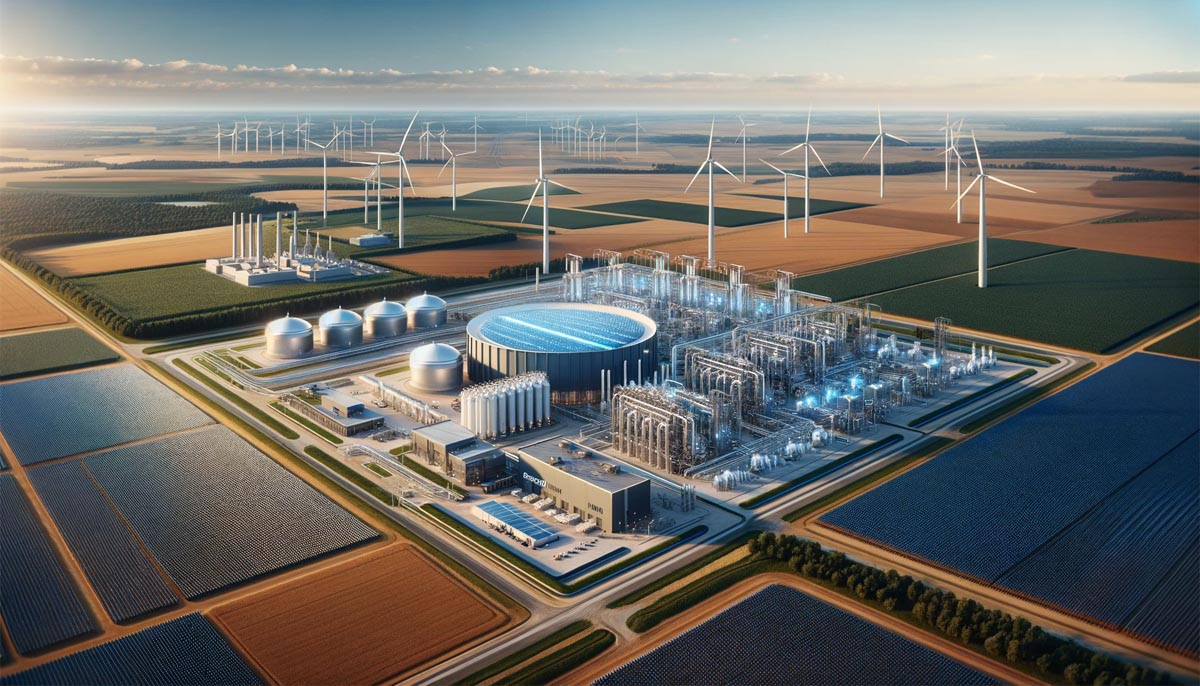Pioneering the Future: The Midwest Hydrogen Hub’s Role in Revolutionizing Energy
In the heart of America’s industrial corridor, a groundbreaking initiative is taking shape, poised to redefine the landscape of renewable energy and sustainable development. The Midwest Hydrogen Hub, led by the Midwest Alliance for Clean Hydrogen (MachH2), emerges as a beacon of innovation in the realms of clean energy and decarbonization. Spanning across Illinois, Indiana, and Michigan, with a vision to expand further, this hub represents not just an ambitious energy project but a testament to the region’s commitment to a greener future.
Contents
At the core of this initiative is a staggering investment, reaching upwards of $1 billion in federal funding, earmarked to ignite a transformation in the way we approach energy production and consumption. This strategic allocation of resources underscores the hub’s pivotal role in the national agenda for clean energy, fueled by the Bipartisan Infrastructure Law. The Midwest Hydrogen Hub stands as a central driver in the United States’ push towards a sustainable energy future, aiming to establish a robust network of clean hydrogen production that transcends state boundaries and industrial sectors. To get a better understanding of all of the Hydrogen Hubs, please check out this page.
But the impact of the Midwest Hydrogen Hub extends far beyond its immediate geographic and economic footprint. It heralds a new era of technological innovation, harnessing diverse and abundant energy sources — from renewable energy and natural gas to low-cost nuclear options. The hub’s approach to hydrogen production is not just about energy; it’s a commitment to environmental stewardship, significantly cutting down carbon emissions and improving air quality, akin to removing emissions from over 867,000 gasoline-powered cars annually.

Moreover, the hub’s influence radiates through its profound social and community implications. With a firm dedication to inclusive growth and diverse hiring practices, it promises to be more than an energy project — it’s a catalyst for community development and environmental justice. Targets like allocating 40% of subcontracted dollars to Minority/Disadvantaged Business Enterprises and creating a significant number of direct jobs in construction and permanent roles highlight its role as a harbinger of economic prosperity and social equity.
As the Midwest Hydrogen Hub unfolds, it not only promises to be a key player in de-carbonizing challenging sectors like steel making, aviation, and heavy-duty transportation but also a symbol of the Midwest’s resilience and innovation. It stands at the intersection of environmental responsibility, economic opportunity, and technological advancement, leading the charge towards a cleaner, more sustainable future for all.
Overview of the Midwest Hydrogen Hub
Nestled within the vibrant industrial heartland of America, the Midwest Hydrogen Hub emerges as a revolutionary project, spearheaded by the Midwest Alliance for Clean Hydrogen, known as MachH2. This initiative marks a significant stride in the realm of clean energy, strategically located across Illinois, Indiana, and Michigan. The Midwest Hydrogen Hub is more than a project confined to its immediate geography; it is an expansive vision with the potential to stretch its influence into other Midwestern states, leveraging the region’s strategic position in the United States’ industrial and transportation sectors.
At the forefront of this ambitious endeavor is the concept of decarbonization, a process integral to the hub’s mission. The Midwest Hydrogen Hub is not just about producing hydrogen; it’s about re-imagining how industries like steel and glass production, power generation, refining, and transportation, including heavy-duty and sustainable aviation sectors, approach their carbon footprint. The hub’s strategy revolves around reducing carbon emissions significantly — to the tune of approximately 3.9 million metric tons yearly.
This reduction is not just a number; it translates to a substantial environmental impact, equivalent to removing the emissions from over 867,000 gasoline-powered vehicles annually. Such a figure speaks volumes about the hub’s potential in improving air quality and making a tangible difference in the fight against climate change.
The cornerstone of the Midwest Hydrogen Hub’s approach lies in its method of hydrogen production. This method is not reliant on a single source; instead, it capitalizes on a diverse array of energy sources. By harnessing renewable energy, natural gas, and even tapping into the potential of low-cost nuclear energy, the hub sets a precedent for versatility and innovation in clean energy production. This multifaceted approach not only ensures a sustainable supply of hydrogen but also positions the hub as a model for energy diversification, balancing economic feasibility with environmental responsibility.
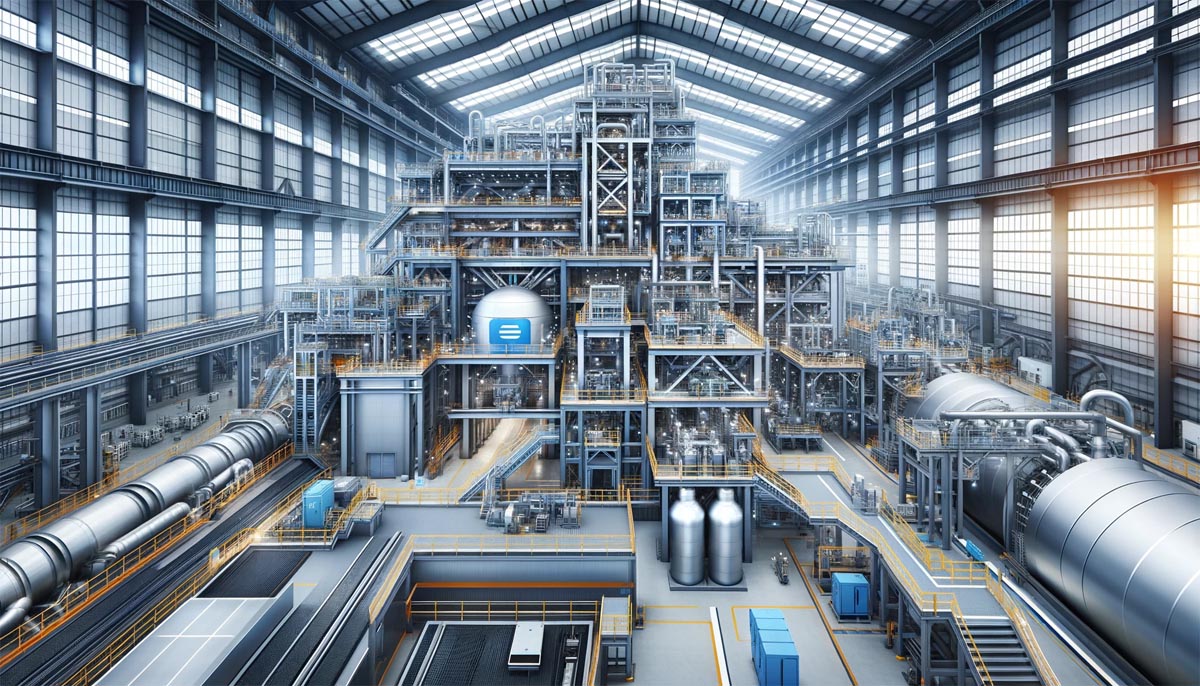
But the Midwest Hydrogen Hub’s vision extends beyond environmental and industrial impact. It embodies a commitment to community and social welfare. The hub’s plans include a robust framework for diverse hiring and contracting, exemplified by setting specific targets such as directing 40 percent of subcontracted dollars to Minority/Disadvantaged Business Enterprises. This focus on inclusivity is further amplified through initiatives like investing in startups, particularly those owned by minority groups, and setting ambitious goals for diverse hiring practices.
Additionally, the hub aims to foster a culture of education and skill development. Through initiatives like the worker education exchange and investing in services that enable training and employment, the Midwest Hydrogen Hub is poised to be not just an energy project but a catalyst for community development and empowerment. The projection of creating 13,600 direct jobs, including a substantial number in construction and permanent roles, underscores the hub’s role as a significant economic driver.
The Midwest Hydrogen Hub stands as a testament to the potential of collaborative innovation in addressing some of the most pressing challenges of our times — climate change, economic inequality, and the need for sustainable development. It represents a convergence of environmental stewardship, technological advancement, and social responsibility, heralding a new era in clean energy and community development.
Delve into the details of the Pacific Northwest Hydrogen Hub‘s strategy to revolutionize clean energy, where innovation meets sustainability
Funding and Economic Impact
The financial underpinnings and economic implications of the Midwest Hydrogen Hub are as monumental as its environmental aspirations. Anchored by a formidable funding commitment of up to $1 billion in federal cost share, this project stands at the vanguard of the United States’ ambitious clean energy initiatives. This financial backing, a critical component of the broader $8 billion hydrogen hub program enabled by the Bipartisan Infrastructure Law, signifies a national commitment to fostering a sustainable hydrogen economy. This level of investment not only underscores the strategic importance of the Midwest Hydrogen Hub but also sets the stage for substantial economic ripple effects across the region.
The economic impact of the Midwest Hydrogen Hub extends well beyond the immediate influx of federal dollars. It is poised to be a significant job creator, a beacon of economic revitalization for the region. The hub anticipates generating a considerable number of jobs, split between construction and permanent positions. These employment opportunities are not just numbers on a page; they represent a tangible transformation in the lives of thousands, offering stable, well-paying jobs that contribute to the economic vitality of the region. The construction phase alone is expected to support thousands of jobs, translating to substantial wage payouts and a notable contribution to state income taxes.
Moreover, the enduring economic benefits of the hub are substantial. Once operational, the permanent positions created by the hub promise to generate millions in annual wages over the projected operating life of the projects. This influx of income is not just a boon for the individuals employed but also a catalyst for broader economic growth, potentially leading to increased state income tax revenues.
But the Midwest Hydrogen Hub’s economic impact goes beyond job creation and income generation. The project is set to become a cornerstone of the region’s economy, catalyzing further investment and development. With the hub’s focus on clean hydrogen production, it is expected to drive the development of related infrastructure and businesses, thereby broadening its economic imprint. This infrastructural expansion is not merely about building physical assets; it is about laying the groundwork for a sustainable, forward-looking economy centered around clean energy.
In essence, the funding and economic impact of the Midwest Hydrogen Hub paint a picture of a project that is transformative in scale and scope. It is an investment in the future, not just in terms of dollars and cents, but in fostering a regional economy that is resilient, sustainable, and inclusive. This hub is more than a clean energy project; it is a seedbed for economic growth and opportunity, a catalyst for a new era of economic prosperity grounded in sustainability and innovation.
Technical and Environmental Aspects
At the heart of the Midwest Hydrogen Hub lies a fusion of cutting-edge technology and deep environmental consciousness, setting a new paradigm in clean energy production. The hub’s technical framework is centered around the innovative use of electrolysis technology. This process, which involves the separation of hydrogen and oxygen molecules from water, is a cornerstone of the hub’s clean hydrogen production. What sets this technology apart is its ability to harness clean energy sources, thereby producing hydrogen without emitting carbon. This feature is crucial, as hydrogen, when made with clean energy, emerges as a pivotal resource in achieving the nation’s goal of net-zero emissions by 2050.
The environmental impact of the Midwest Hydrogen Hub is profound and far-reaching. By employing hydrogen as a clean energy source, the hub directly contributes to reducing emissions from multiple sectors traditionally challenging to de-carbonize. These sectors include heavy industries like steel making and cement production, as well as critical areas such as aviation, agriculture, and long-haul transportation. The hub’s role in these sectors is not just about providing an alternative energy source; it is about transforming these industries into models of sustainability, significantly lowering their carbon footprint.
The environmental benefits of the hub extend beyond emission reductions. By improving air quality and contributing to a healthier environment, the hub’s operations have a direct positive impact on public health. The shift towards clean hydrogen as an energy source is a crucial step in mitigating the effects of climate change, offering a path to a more sustainable and environmentally responsible future.
Furthermore, the hub’s technical approach is underpinned by the utilization of the Midwest’s abundant nuclear and renewable power resources. This strategic use of regional energy assets not only ensures a steady and sustainable supply of clean hydrogen but also exemplifies how regional resources can be leveraged for national and global environmental benefits. The integration of diverse energy sources into the hub’s operations is a testament to its commitment to innovation and environmental stewardship.
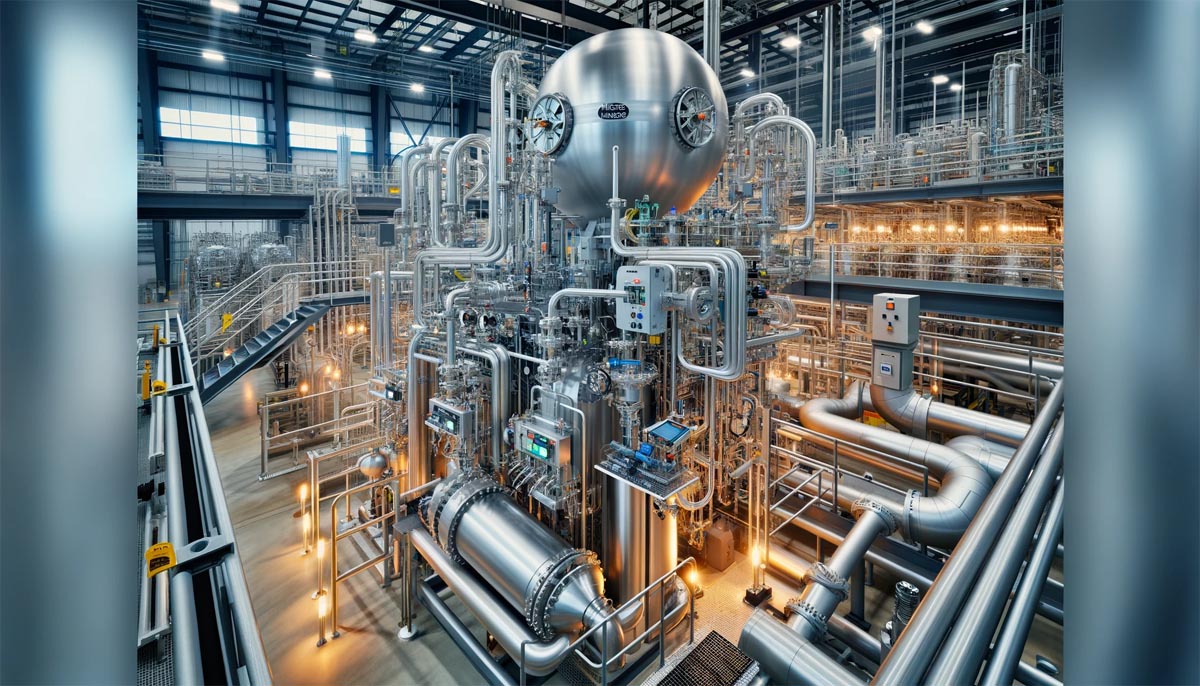
The technical and environmental aspects of the Midwest Hydrogen Hub represent a harmonious blend of technology and ecological responsibility. The hub’s innovative approach to hydrogen production, combined with its significant role in reducing emissions across various sectors, illustrates a forward-thinking model for clean energy development. It stands as a beacon of environmental progress, driving the transition towards a cleaner, more sustainable future. See the similarities between the Midwest Hub and the The Mid-Atlantic Hydrogen Hub.
Community and Social Impact
The Midwest Hydrogen Hub is not just a technological marvel; it is a catalyst for profound community and social transformation. Central to the hub’s philosophy is a commitment to inclusivity and diversity, especially in its hiring and contracting practices. This commitment is demonstrated through specific targets designed to ensure a broad spectrum of community participation. A notable example of this is the allocation of 40 percent of the hub’s subcontracted dollars to Minority/Disadvantaged Business Enterprises (M/DBEs). Such a target is not merely a policy decision; it is a tangible effort to bring about equity in economic opportunities and foster a diverse business ecosystem.
Beyond financial inclusivity, the hub is poised to be a significant driver of job creation, promising to generate thousands of direct jobs. These jobs are split between construction roles and permanent positions, offering not just employment but a path to stable, long-term careers for many in the region. This influx of job opportunities is expected to have a ripple effect across the community, enhancing economic stability and providing a foundation for growth and prosperity.
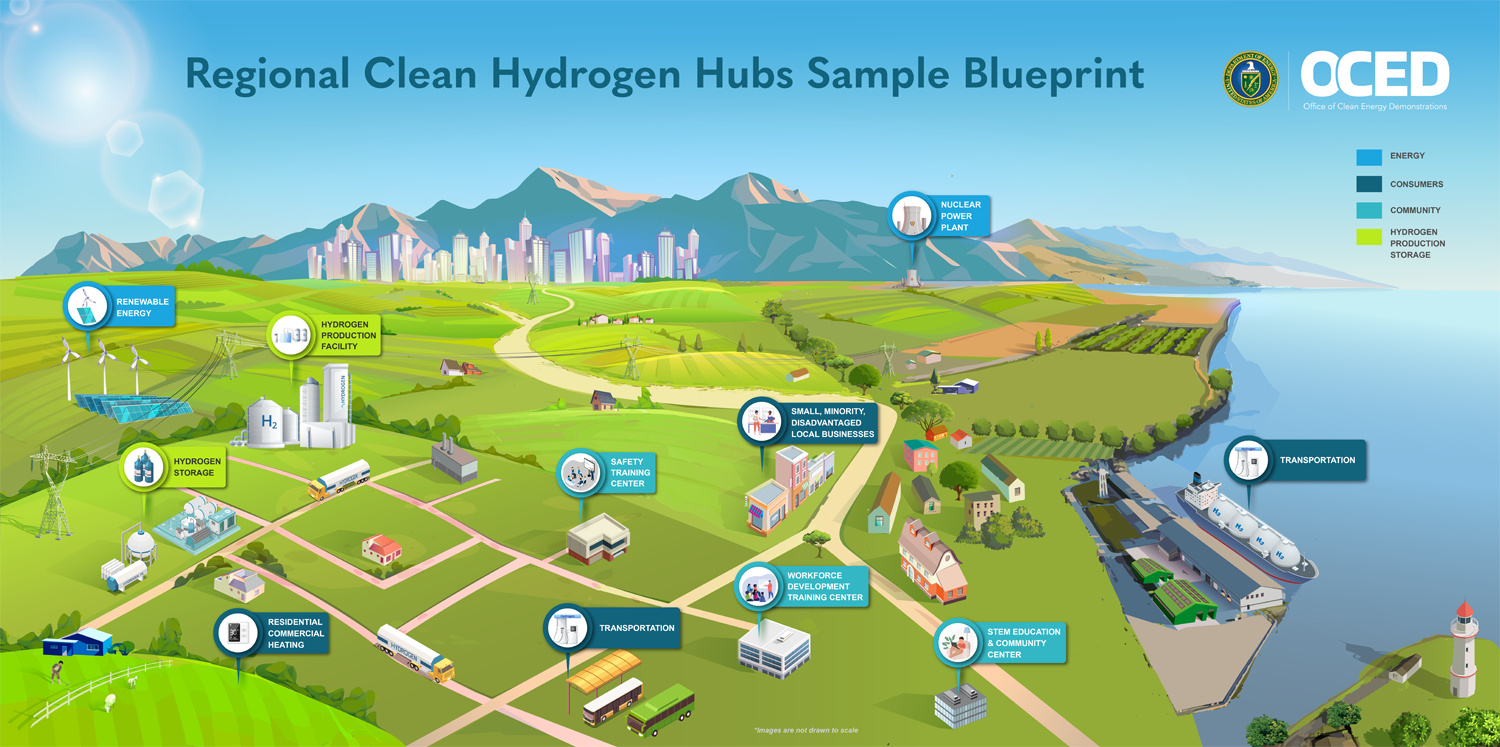
In addition to job creation, the hub places a strong emphasis on community development and empowerment. Initiatives like the worker education exchange and significant investment in training and employment services underscore the hub’s commitment to not just employ, but to educate and upskill the workforce. This approach reflects a deep understanding that the true value of a project lies not only in its physical infrastructure but in its human capital.
Furthermore, the Midwest Hydrogen Hub plans to embed itself within the fabric of the community by creating localized advisory councils and a Community Benefits Advisory Working Group. These entities aim to ensure that the hub’s operations align with local needs and priorities, fostering a sense of ownership and partnership among residents. This collaborative approach is pivotal in ensuring that the benefits of the hydrogen hub extend to all corners of the community, particularly to those historically under-served or marginalized.
The hub’s social impact is characterized by its commitment to environmental justice. By improving air quality and reducing carbon emissions, the hub directly contributes to a healthier living environment. This benefit is especially significant for disadvantaged communities often disproportionately affected by environmental degradation. The hub, therefore, stands not just as an energy project, but as a beacon of hope for a more equitable and just society.
The Midwest Hydrogen Hub is set to leave an indelible mark on the communities it touches. Its impact goes beyond the economic; it is about nurturing a community that is diverse, skilled, and empowered. The hub is a testament to the power of energy projects in driving social change and building a more inclusive future.
Strategic Importance and Future Outlook
The Midwest Hydrogen Hub stands as a pivotal project not only for its immediate region but for the broader landscape of the United States’ energy future. Strategically located in a key industrial and transportation corridor, the hub is poised to play a central role in the nation’s efforts to de-carbonize multiple sectors of the economy. This strategic positioning is not coincidental; it leverages the Midwest’s unique strengths, including its robust transportation infrastructure and industrial base, making it an ideal location for pioneering a clean hydrogen network.
The hub’s role in national decarbonization efforts is both significant and multifaceted. By focusing on sectors like steel and glass production, power generation, refining, and transportation, including heavy-duty and aviation sectors, the Midwest Hydrogen Hub is addressing some of the most challenging areas in terms of carbon emissions. The hub’s potential to reduce carbon emissions by approximately 3.9 million metric tons per year is a testament to its impact on the national goal of reducing greenhouse gas emissions.
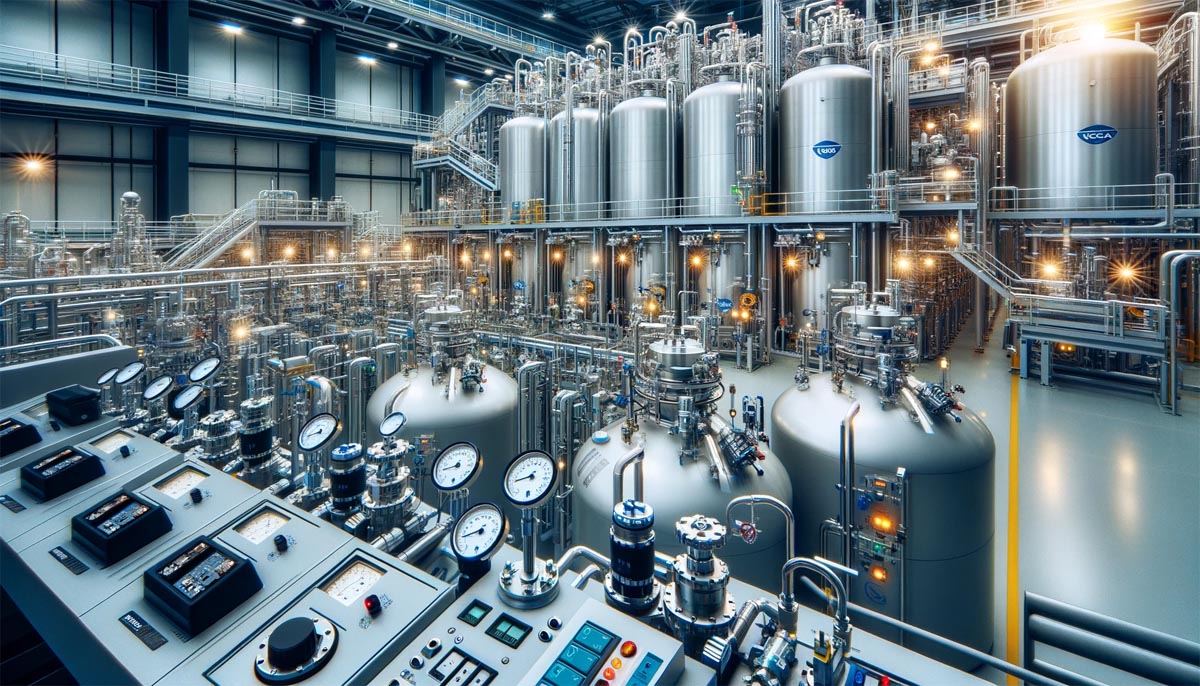
Looking towards the future, the Midwest Hydrogen Hub is set to contribute substantially to the formation of a national clean hydrogen network. This network is envisioned as part of the larger $8 billion hydrogen hub program, funded through the Bipartisan Infrastructure Law. The ambition is clear: to establish a sustainable hydrogen economy that spans across America, contributing to the broader goal of achieving net-zero emissions by 2050. The Midwest Hydrogen Hub, with its innovative approach and strategic location, is expected to form a crucial part of this national network.
The future outlook of the Midwest Hydrogen Hub is not just about its technical and environmental contributions. It also encompasses its role in economic and community development. The hub is anticipated to be a major economic driver in the region, creating thousands of jobs and spurring investment in clean energy infrastructure. This economic boost is expected to extend beyond the immediate vicinity of the hub, potentially catalyzing regional growth and prosperity.
The hub’s commitment to diversity and environmental justice positions it as a model for future energy projects. Its approach to inclusive growth and community engagement sets a standard for how large-scale infrastructure projects can positively impact local communities, particularly those that have been historically under served.
The Midwest Hydrogen Hub is much more than a clean energy project; it is a linchpin in the United States’ transition to a sustainable energy future. Its strategic importance lies in its ability to de-carbonize challenging sectors, its role in forming a national hydrogen network, and its potential to drive economic and social progress. As the hub moves forward, it stands as a symbol of innovation, sustainability, and hope for a cleaner, more equitable future.
Conclusion
The Midwest Hydrogen Hub stands at the forefront of a new era in energy, environmental sustainability, and community development. As a project of immense scale and scope, it embodies a future where clean energy is not just a concept but a tangible reality. Through its innovative approach to hydrogen production, strategic use of diverse energy sources, and commitment to reducing carbon emissions, the hub is paving the way for a sustainable future, not just for the Midwest but for the nation as a whole.
This ambitious initiative goes beyond the technical and environmental realms. It represents a profound shift in how we view energy projects and their role in society. The hub’s commitment to diversity, equity, and inclusion in hiring and contracting, along with its significant contribution to job creation and community empowerment, sets a new standard for how large-scale projects can and should interact with and benefit their communities. These efforts reflect a deep understanding that the true measure of a project’s success lies not only in its environmental impact but also in its ability to uplift and transform communities.
Looking ahead, the Midwest Hydrogen Hub is poised to be a key player in America’s clean energy landscape. Its strategic location and potential to significantly contribute to de-carbonizing multiple sectors position it as a central component in the national goal of achieving net-zero emissions by 2050. The hub’s role in forming a part of a national clean hydrogen network underscores its strategic importance and the far-reaching implications of its success.
The Midwest Hydrogen Hub is not just an infrastructure project; it is a beacon of hope and a model for the future. It demonstrates how innovation, when aligned with environmental stewardship, economic growth, and social responsibility, can lead to transformative change. As the project unfolds, it holds the promise of a brighter, cleaner, and more equitable future, serving as a testament to the power of collective effort and visionary leadership in the face of global challenges.

